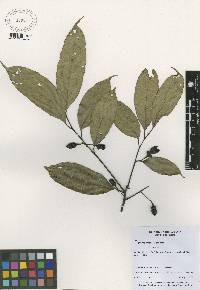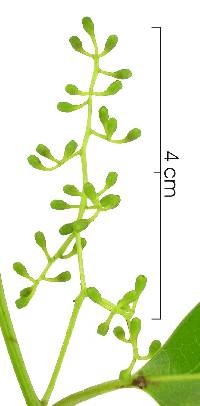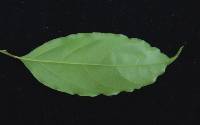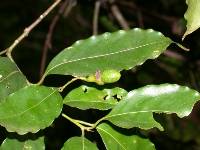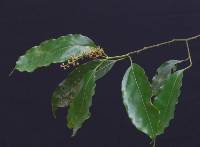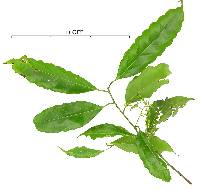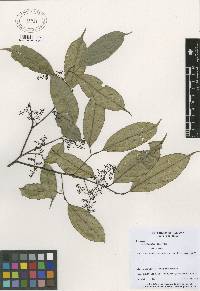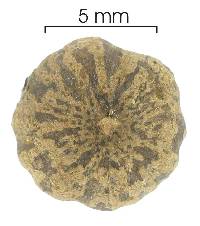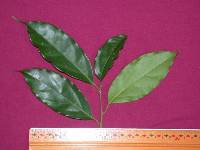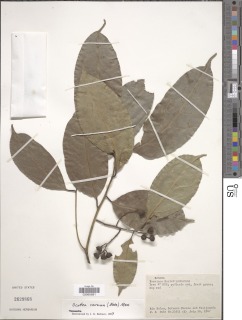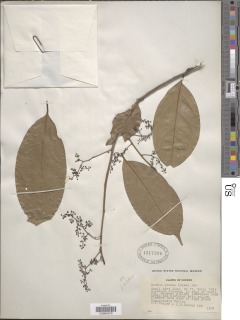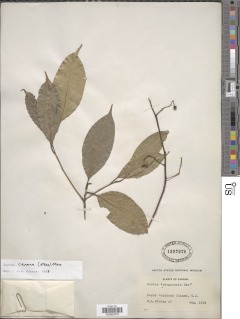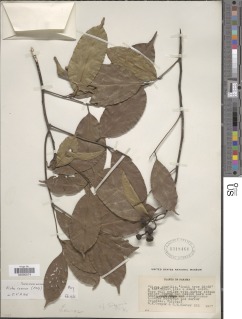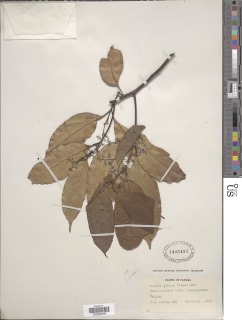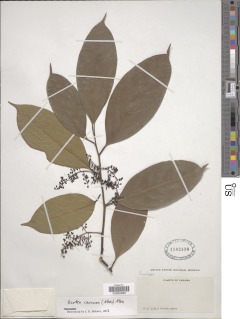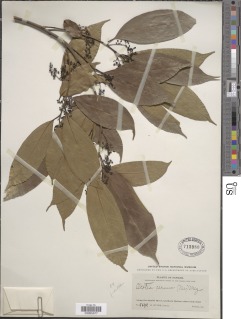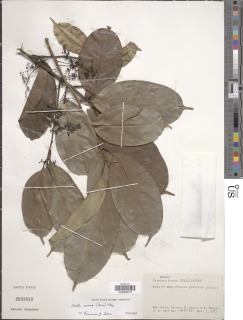

|
|
|
|
Family: Lauraceae
sigua, more...sigua amarilla
|
Description: A small forest tree. The bark is dark, and there are sometimes small stems sprouting from the base of the trunk. Terminal branchlets are green and lack any hairs. Leaves are simple, alternate, shiny green, with widely spaced secondary veins, and have clearly undulate margins. When crushed, leaves have a musky, avocado-like fragrance, but it is not especially strong. The petiole is slightly swollen and cylindrical. Reproduction: The flowers are small, white or greenish-yellow, in clusters along the branches, produced from February to March. The fruit is an oblong berry, like a small avocado with thin pulp, green than black, maturing in August-September. Distribution: Found at Barro Colorado, Soberania, Sherman, Santa Rita, but rare. A species of mature forest. Similar Species: As Lauraceae go, this species is fairly easy to learn. The smallish, undulate leaves and widely-spaced secondary veins set it apart pretty clearly. LK laciag Lacistema aggregatum LK2 in the Flacourtiaceae has remarkably similar leaves in arrangement and form, but they lack undulate margins, and Lacistema has distinctive scars on the branchlets. However, if you haven't learned the specific traits of Ocotea cernua, this species is hard to recognize as Lauraceae; see LK ocotwh Ocotea whitei LK2 for a discussion of the Lauraceae. Descripción: Árbol de 5 a 20 m de alto. Copa umbelada o redondeada. Tronco ramificado a baja altura, a veces con rebrotes en la base. Corteza exterior negra. Ramitas terminales verdes y glabras. Hojas simples y alternas, de 5-15 x 3-5 cm, elípticas a oblongas, con ápice acuminado, bordes ondulados y base obtusa. Las hojas son aromáticas al estrujarlas. Pecíolo de 1-2 cm de largo. La especie es dioica. Flores verdes o amarillentas, aromáticas, a veces con un ligero olor a limón. Frutos en drupas, de 1-1.5 cm de largo, verdes y con una copa basal de color rojizo, tornándose negros al madurar. Datos Ecológicos: La especie crece a bajas y medianas elevaciones, en climas húmedos o muy húmedos. En Panamá se encuentra en las provincias de Bocas del Toro, Chiriquí, Coclé, Colón, Darién, Panamá y Veraguas. Florece y fructifica de febrero a septiembre. Las flores son visitadas por abejas y otros insectos. Especies Parecidas: A menudo se confunde con LK laciag Lacistema aggregatum LK2 , pero en L. aggregatum las hojas tienen los bordes dentados y los frutos son cápsulas, tornándose rojos y dehiscentes al madurar, lo cual no ocurre en O. cernua. También se puede confundir con LK ocotar Ocotea arcuata LK2 , pero en O. arcuata las hojas tienen las nervaduras secundarias muy reticuladas y los frutos son de mayor tamaño. Usos: La madera es empleada en la construcción de puentes y pisos industriales. The species is not separable from O. caudata (Nees) Mez, which ranges widely in South America. The character used by Mez, i.e., degree of prominence of reticulate veins, is not adequate for separation of the South American material. Bocas Species Database Notes: Miryam Venegas |
|
|
|


